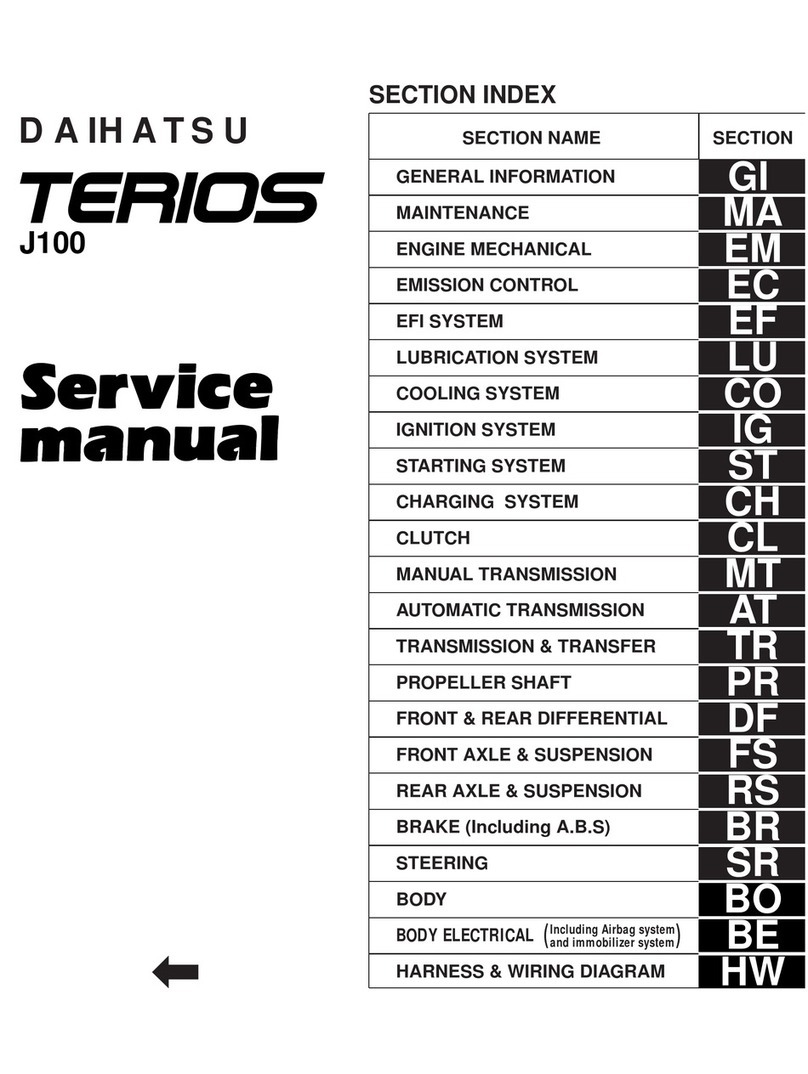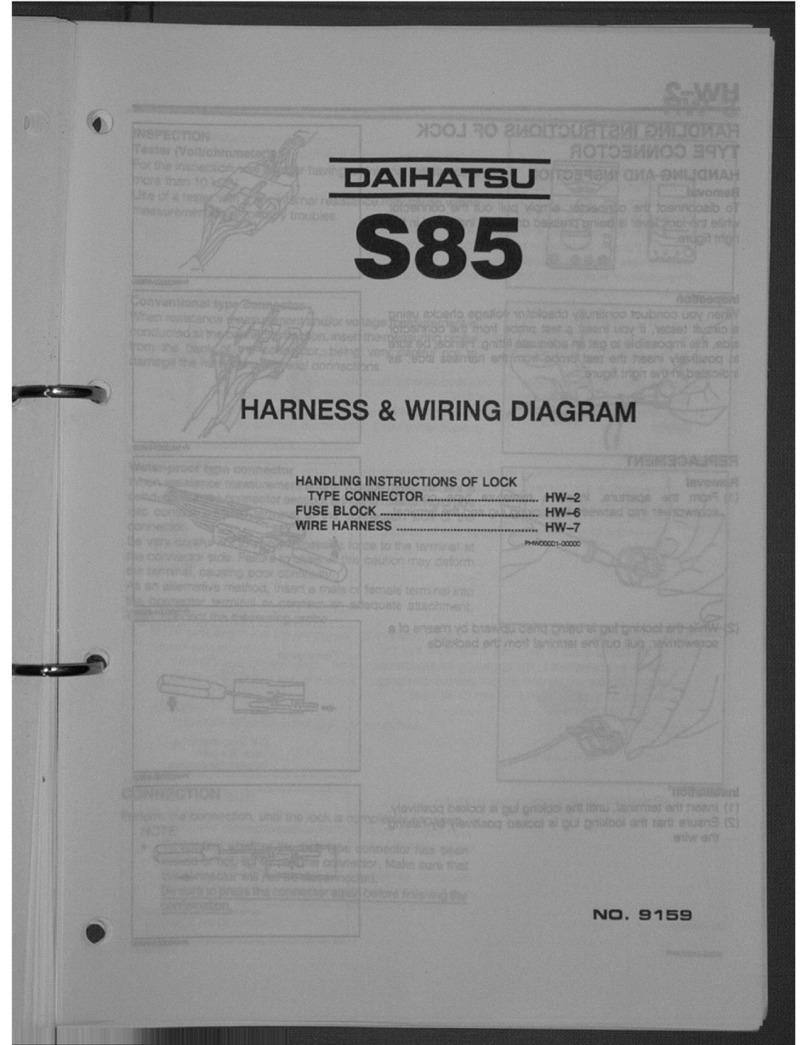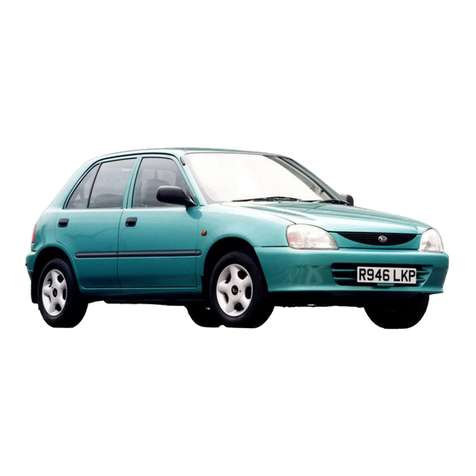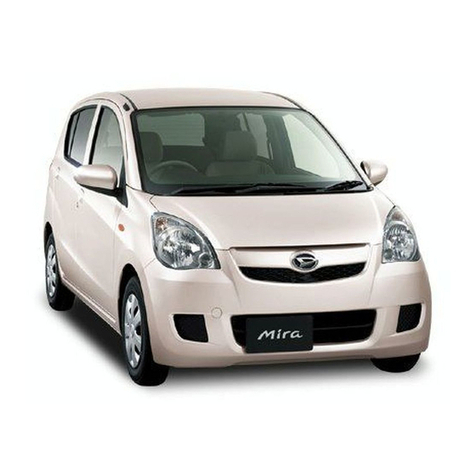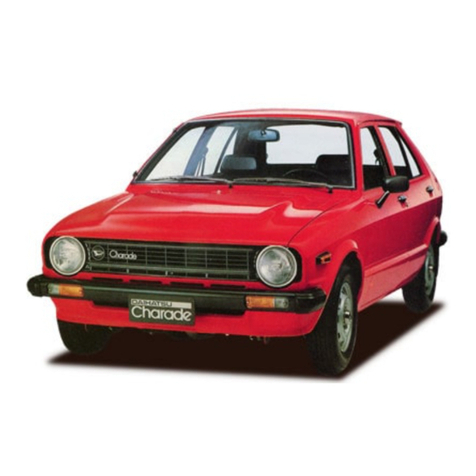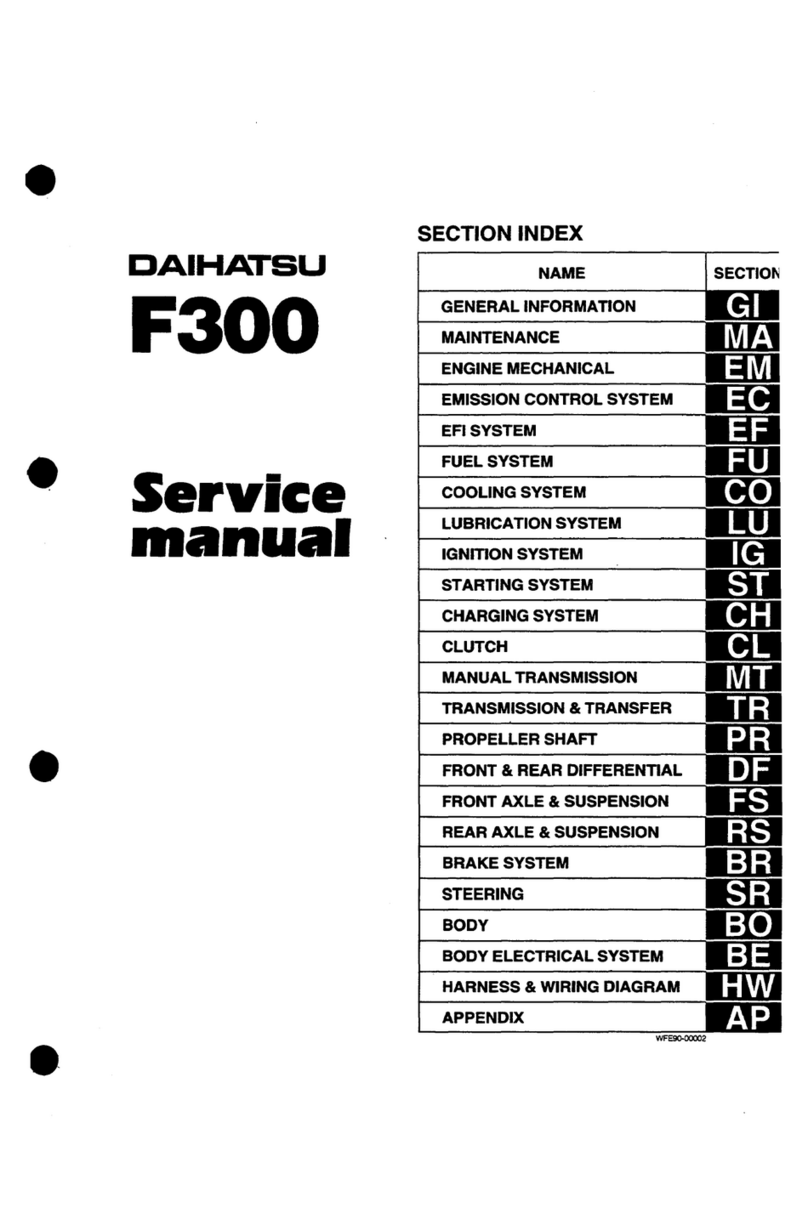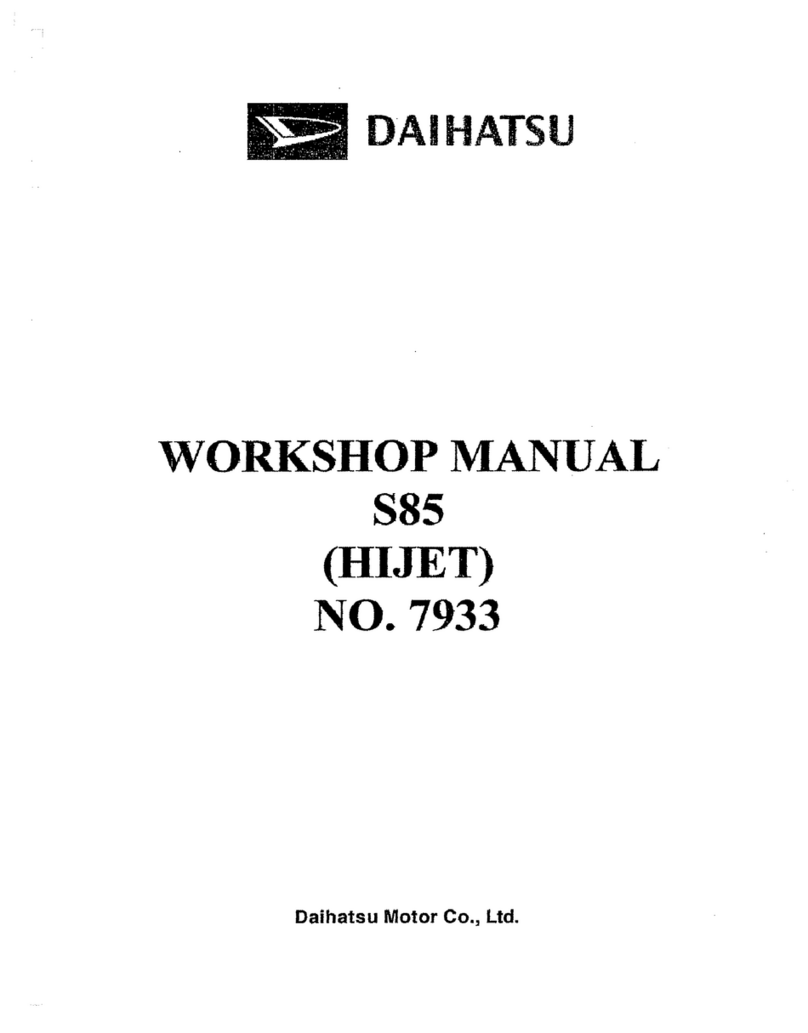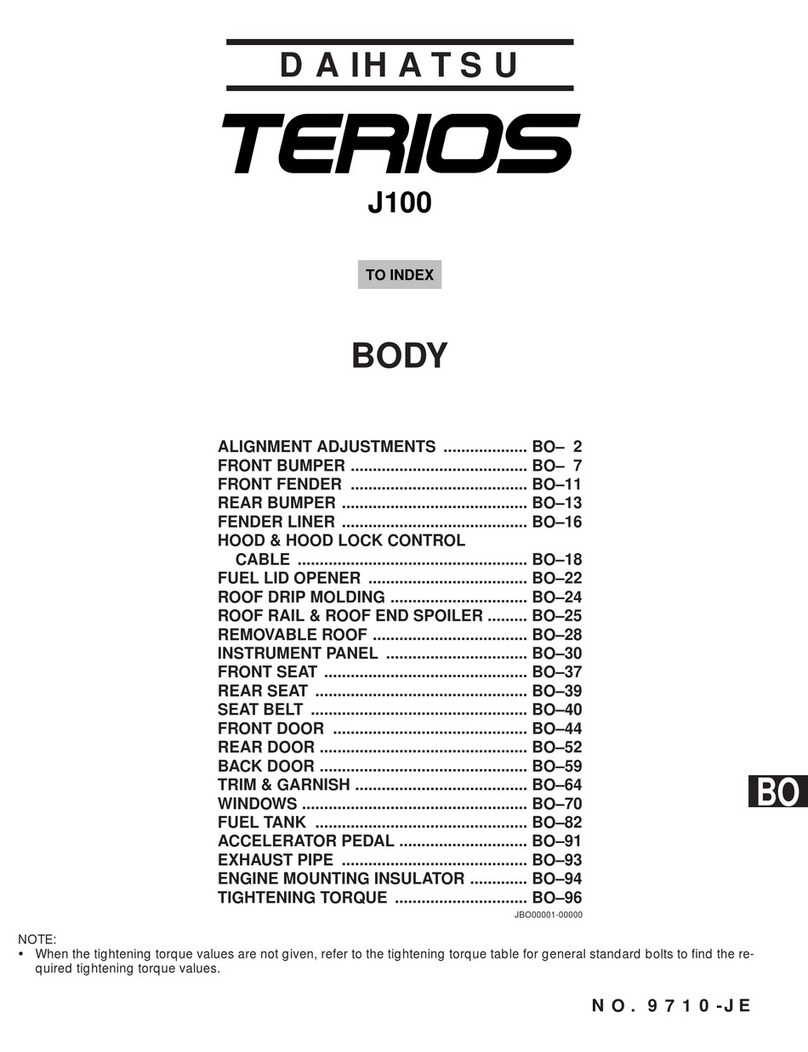
(4) Cleaning of air filter element
Clean the air filter element with compressed air.
First, blow compressed air from the back side of the
element thoroughly. Then, blow off the upper side of
the element.
WARNING:
·Protect your eyes with safety goggles during the clean-
ing operation.
CAUTION:
·The air pressure to be used for this cleaning operation
should not exceed 392.3 kPa (4.0 kgf/cm2).
Replace the air filter element, if the element is exces-
sively dirty.
(5) Installation of air filter element
qInstall the air filter element in the air filter case cover.
NOTE:
·Ensure that the air filter element faces in such a direc-
tion that the wider protrusion side comes to the air filter
case cover side.
wClose the air filter case cover.
eLatch the four clips properly.
3. Inspection of blow-by gas recirculation device
(1) Visually inspect the hoses for improper connections,
cracks, leak and damage.
NOTE:
·Replace parts which exhibit damage as necessary.
(2) Remove the oil filler cap.
(3) Disconnect the blow-by gas hose from the throttle
body.
(4) Ensure that no resistance exists when you blow your
breath to the disconnected hose end (which was con-
nected to the throttle body).
If resistance is felt or no air continuity exists, check
blow-by gas hose and the cylinder head cover.
(5) Connect the blow-by gas hose to the throttle body.
(6) Install the oil filler cap securely.
(7) Disconnect the PCV hose which is connected to the
throttle body at the throttle body side.
(8) Ensure that heavy resistance exists when you blow
your breath from the disconnected hose end.
If no continuity exists or no resistance for air continuity
exists, replace or repair the cylinder head cover.
(Refer to the EM section for the cylinder head cover re-
placement.)
NOTE:
·The orifice is built in the cylinder head cover. This pro-
cedure is required for ensuring the orifice function in
the cylinder head. If this orifice is plugged, correct en-
gine idle speed will not be obtained.
(9) Connect the PCV hose to the throttle body properly.
MA–7
JMA00008-00004
JMA00009-00005
JMA00010-00006
JMA00011-00007
